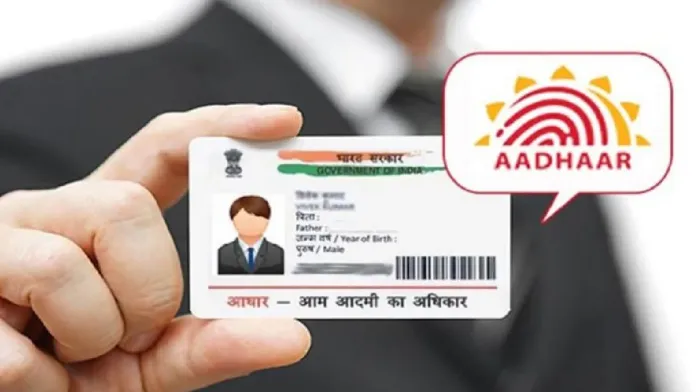What Is an E Aadhaar Card and How Does It Differ from the Physical Aadhaar?

India is advancing rapidly towards becoming a digital nation, and one of the cornerstones of this shift has been the Aadhaar card. Issued by the Unique Identification Authority of India (UIDAI), the Aadhaar card serves as proof of identity and proof of address for Indian residents. In recent years, UIDAI has introduced a digital counterpart to the physical Aadhaar card, known as the E-Aadhaar card. This article explores what an E Aadhaar card is, how it differs from the physical Aadhaar card, and the process to apply for one.
Understanding the E-Aadhaar Card
An E Aadhaar Card is a digital version of the Aadhaar card that can be download from the UIDAI website. It is electronically authenticate and can be use in place of the physical Aadhaar card for various verification processes. The E Aadhaar card is secure with a digital signature and a QR code that contains the individual’s demographic and biometric information.
Key Features of the E-Aadhaar Card
Before we delve into the differences between the E Aadhaar and the physical Aadhaar card, let’s look at some of the features that make the E Aadhaar card a robust digital identity tool:
1. Digital Security: The E Aadhaar card is equip with high-level security features, including a digital signature and a QR code that can be scan to verify the authenticity of the card.
2. Accessibility: Because it is digital, the E Aadhaar card can be accessed anytime and anywhere, provided you have an internet connection. This eliminates the need to carry the physical card at all times.
3. Paperless Verification: Digital documents are gaining traction in India. The E Aadhaar card facilitates paperless verification for various services, such as opening a bank account, applying for a passport, or even for availing government subsidies.
4. Easy Updates: Any updates or changes in your Aadhaar details reflect instantly on your E Aadhaar card once you download the updated version from the UIDAI website.
How to Apply for an E-Aadhaar Card
The process to apply for E Aadhaar card is straightforward and user-friendly. Follow these steps:
1. Visit the UIDAI Website: Go to the official UIDAI website (uidai.gov.in).
2. Find the E-Aadhaar Link: Navigate to the ‘My Aadhaar’ section and click on the ‘Download Aadhaar’ link.
3. Enter Required Details: You will need to enter your 12-digit Aadhaar number or 16-digit Virtual ID (VID), along with other necessary details like your full name and pin code.
4. OTP Verification: Upon submitting these details, you will receive a One-Time Password (OTP) on your registered mobile number. Enter this OTP to proceed.
5. Download Your E-Aadhaar: Once the OTP is verified, you can download the E-Aadhaar card in PDF format. Note that this file is password-protected, with the password being a combination of the first four letters of your name (in capital letters) and your birth year.
Differences Between E-Aadhaar and Physical Aadhaar
Form Factor and Accessibility
Physical Aadhaar: A physical Aadhaar card is a hard-copy document, similar to other ID cards like a driver’s license or a PAN card. It must be carried to be presented when needed.
E-Aadhaar: The E Aadhaar card, on the other hand, is a digital document. It can be stored on your smartphone or cloud services, making it accessible on the go.
Security Features
Physical Aadhaar: A physical card could potentially be lost, stolen, or damaged, and requires physical presence for verification. Misplacing a physical card could lead to identity theft.
E-Aadhaar: With encryption and a QR code for verification, the E Aadhaar card offers an additional layer of security. It minimizes the risk of loss or theft since it can be downloaded multiple times using secure means.
Verification Process
Physical Aadhaar: Verification with a physical Aadhaar card requires the document to be in hand and is usually accompanied by biometric verification.
E-Aadhaar: For E-Aadhaar, verification can be done easily by scanning the QR code and reviewing the digitally authenticated information it contains.
Convenience
Physical Aadhaar: Carrying a physical card means taking extra precautions to ensure it is not misplaced or damaged.
E-Aadhaar: Being digital, it is easy to store a copy on your devices or cloud storage, ensuring that it is always available when required.
Conclusion
The E-Aadhaar card simplifies the process of identification and verification in today’s fast-paced digital world. It provides an extra layer of convenience and security, making it an invaluable asset for Indian residents. Applying for an E Aadhaar card is straightforward and can save you the hassle of carrying a physical document at all times. As India continues its journey toward digital transformation, the E Aadhaar card stands as a testament to the country’s innovative strides in leveraging technology for public benefit.
Whether you are applying for a new service, moving to a new location, or simply need to confirm your identity, the E Aadhaar card offers unparalleled ease and security. Make sure to apply for an E Aadhaar card today and experience the advantages of carrying your unique identity in a digital form.







